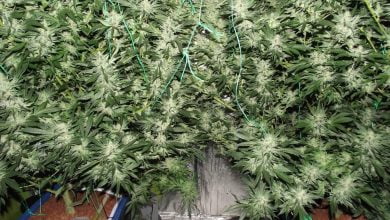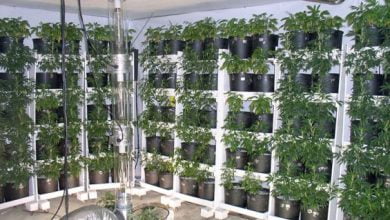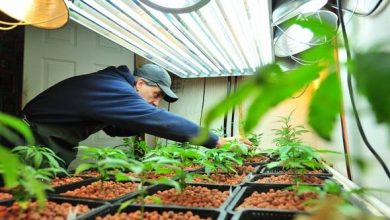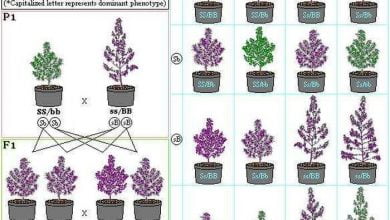Mycorrhizae in soil and Hydroponics?. Beneficial mycorrhizae have been living with plants roots in a friendly relationship for at least 460 million years. Today, inoculating your potting soil mix or hydroponic reservoir with valuable mycorrhizae has many benefits.
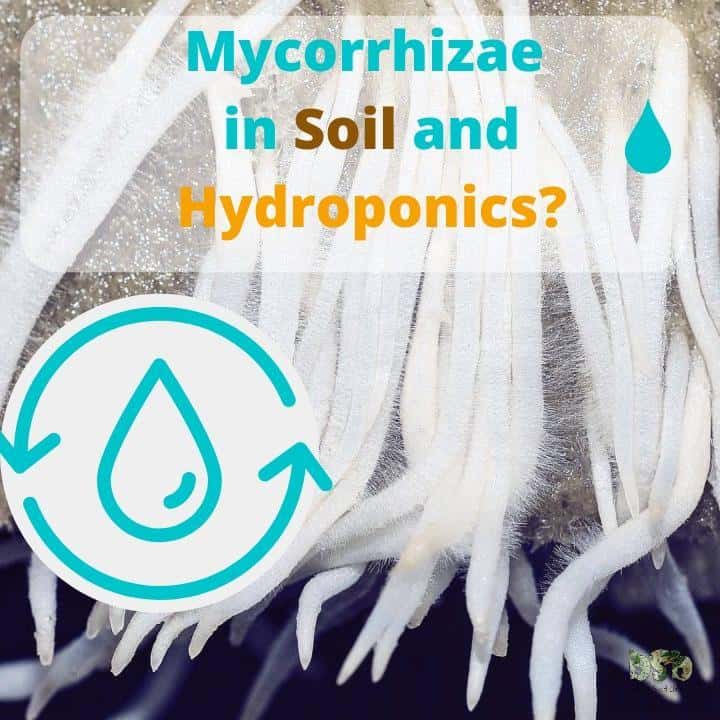
With the chelating enzymes the fungus launch, the plants uptake even more useable nutrients. With the fungal hairs working as a secondary root system, plants grow huge faster. Overall, with help from the fungus, plants grow up healthier.
When fungal hairs, called hyphae, were first discovered surrounding plant roots on a 460 million-year-old ocean fossil, it was believed the fungus must be robbing the plants of their energy. Additional research has proved this to be false. In truth, these very fossils became proof that suggests a relationship existed between the plants and the fungus that benefits both. The evidence goes on to conclude that it was this cooperative relationship that allowed plants to start efficiently growing on the land about 55 million years ago.
Research since these discoveries reveal that 90 percent of all green plants on land have these relationships. The fungal hairs are much finer than root hairs, and so have a much bigger surface site compared with roots. They can turn into small places that plant roots can not. Surprisingly, over one mile of hyphal filaments can exist in one thimble of soil. Combined with the productions of chelating enzymes, plant growth rates can be substantially enhanced by maintaining healthy mycorrhizae.
Mycorrhizal fungi.
The seemingly magical homes of mycorrhizal fungi (aka ‘mycorrhizae’) are already relatively well understood to
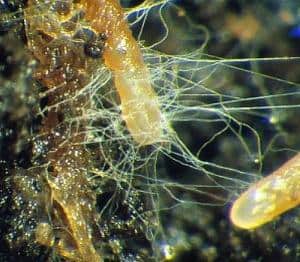
soil growers. This unique “root fungus” forms a mutualistic relationship with the roots of lots of plants, permitting them to access more water and nutrients.
Mycorrhizae efficiently extend the reach of the roots by forming a mycelial network that has the ability to remove securely bonded water and nutrients (especially phosphorus and iron) and translocate them back to the plant. The plant, in turn, feeds the root fungus with carbohydrates.
You may have heard the word Mycorrhizae (pronounced – My Core A Zi) thrown around a lot lately without a much explanation as to what it actually is, or what it does.
Also thrown around a lot is the term Beneficial Bacteria, and while they are similar, they are very different organisms.
In the following article, we will discuss what Mycorrhizae is, what Beneficial Bacteria is, what they do for your plants, how they live, and how they can help kill some pretty nasty pests.
What Does Mycorrhizae Mean?
Mycorrhiza is a combination of two different Greek words. Myco, the Greek word for Fungus, and Rhiza, the Greek word for Roots.
Putting those words together we get Fungus Roots, or Mycorrhiza the singular form of Mycorrhizae.
What are Mycorrhizae?
Mycorrhizae are a group of beneficial fungi that colonize the roots of your Marijuana plants and form symbiotic relationships with them.
These fungi form filaments or “webs” throughout the soil or growing medium of your plants, aiding and improving the natural functions of the plants.
Often times Mycorrhizae is also associated with Beneficial Bacteria without much discussion as to what the differences are between the two.
What are Beneficial Bacteria?
As opposed to Mycorrhizae which live in and on the roots of the plant, Beneficial Bacteria mainly (but not only) colonize the soil or growing medium of the plant. Often times referred to as (PGPR) in the botany community, Beneficial Bacteria has been used in crops for over 50 years.
Powder, liquid and granular forms of mycorrhizal.
Powder:
Longer shelf life compared to liquids.
It can be stored for up to a year, longer if stored at 38 degrees F, used for seed inoculation or as a solution for repeated watering applications.
Liquid:
Shorter shelf life compared to powders and granules.
Use as soon as possible or store at a temp of 38 degrees F.
Requires long static contact with root tips for root infection to occur.
Granules:
Spores carried by volcanic ash or other inert material.
Very cheap to buy!
Used for surface inoculation root application at planting.
Often contain additional fertilizers or inoculants.
How Does Mycorrhizae & Beneficial Bacteria Help My Cannabis Plants?
- Increases Roots Surface Area
A simple way of understanding how Mycorrhizae works is to think of Mycorrhizae as an extension of the plants’ roots. These Mycorrhizae “webs” basically increase the surface absorbing area of the Cannabis plant roots by up to 1000x.The more surface area, the more nutrients the plant is able to consume, or at least uptake into itself.
- Helps Uptake of Some Nutrients
Certain strains of Beneficial Bacteria have been shown to increase the uptake and stabilization of some nutrients.
- Disease & Drought Resistance
Plants with Mycorrhizae & Beneficial Bacteria in their root system are more resistant to microbial soil diseases and are often more resistant to drought-like conditions.
- Helps Prevent Toxicity Problems
Certain strains of Mycorrhizae help protect plants against toxicity from high metal concentrations in soil. Different strains of Mycorrhizae can have different protective benefits against different contaminates.
- Kills Some Insects
Bacillus Thuringiensis is a popular strain of Mycorrhizae that is available in many over the counter Mycorrhizae products. This particular strain of Mycorrhizae is not only a beneficial root fungus but is also a naturally occurring bacterial insect disease. - Bacillus Thuringiensis, when eaten by insects, develops into a toxic crystal protein inside the insect’s stomach and leaches into their cells, slowly killing them. Bacillus Thuringiensis is reported to kill the following insects:
Fungus Gnat, Cabbage Worm, Tomato & Tobacco Hornworm, Black fly, Mosquito, Colorado potato beetle, Elm leaf beetle, Cottonwood leaf beetle, Pine butterfly, Pine budworm, Western spruce budworm, Spiny elm caterpillar, Red-humped caterpillar, Leafroller, Fall webworm, Tent caterpillar
What Do Mycorrhizae Eat?
Mycorrhizae feed on carbohydrates and sugars, like glucose and sucrose. Most plants naturally create the carbohydrates to feed their fungal friends.
However, it is important to note, that the Cannabis plant diverts sugars from feeding the Mycorrhizae in its roots to building buds. It’s at this time that there is a potential for your Mycorrhizae to die from starvation.
Adding sugar during flowering prevents Mycorrhizae starvation, keeping your plants happy.
Should I Add Mycorrhizae To My Marijuana Plants?
Absolutely, even if you are on a budget adding Mycorrhizae to your plants should be high on the list. Healthy root zones mean healthy plants. Healthier plants, mean bigger buds.
The only 2 exceptions are in gardens that use large amounts of H202 as it can instantly kill Mycorrhizae if used incorrectly, or in too strong of a dose. Or for plants that are grown in Coco Coir growing medium as it has a natural anti-bacterial property that kills Mycorrhizae.
There are many different Mycorrhizae products available on the market today.
Including, but not limited to: Plant Success, Great White, and so many more.
References:
http://www.ext.colostate.edu/pubs/insect/05556.html
http://en.wikipedia.org/wiki/Mycorrhiza
http://www.mycorrhizae.com
http://u-tokyo.academia.edu/IFTIKHARAHMED/Papers/293426/Soil_Beneficial_Bacteria_and_Their_Role_In_Plant_Growth_Promotion_a_Review
Can I use Mycorrhizae in Hydroponics?.
Ok, so that’s dirt. However what about Mycorrhizae in Hydroponics? Nutrient makers stay divided on the problem. Some recommend a totally sterile environment. That means no bacteria (advantageous or otherwise) and no friendly fungi.
Why? Proponents of sterilized hydroponic environments suggest that in hydroponics the grower is providing all the nutrients their plants need in a directly accessible form and question the requirement for little ‘fungi helpers’ to assist in nutrient assimilation. (In hydroponics, all the nutrients are supplied in ionic, or directly available, form.)
The roots should not have to go out in search of water in hydroponics as it’s being provided in abundance. Recent researches have shown that mycorrhizae can help plants uptake mineral-based nutrients too, promote with root branching, and greatly extend the energetic feeding capability of the feeder root tips.
Under natural conditions plants reside in close cooperative association with a group of dirt microorganisms called mycorrhizal fungi. These fungi colonize plant roots and extend the root system into the bordering soil. Quotes of quantities of mycorrhizal filaments present in growth media associated with plants are amazing. Several miles of filaments can be present in less than a thimbleful of soil.
The relationship is helpful due to the fact that the plant enjoys enhanced nutrient and water uptake, illness resistance, and superior survival and growth.
How do Mycorrhizae in Hydroponics safeguard roots? The source of resistance is probably a mix of elements. The mycorrhizal fungus can present a physical obstacle to the pathogenic fungus and/or produce prescription antibiotics that restrict the development of the pathogen. Also, mycorrhizal-colonized plants develop even more robust root systems that buffer the plant against the impact of pathogens.
It is likewise possible that the mycorrhizal fungus stimulates the host to produce chemicals that prevent the growth of other fungi on the root. In addition, because the mycorrhizal fungus is so skilled at catching nutrients, there are limited resources available for the development of the condition fungus. Research has revealed that, once a root is colonized by a mycorrhizal fungus, it is more resistant to infection by illness microorganisms.
How do you inoculate mycorrhizal fungi in a hydroponic operation? Specific mycorrhizal spores (or “seeds”) of the fungus have been selected for their growth-enhancing abilities. The objective is to produce physical contact between the mycorrhizal inoculant and the plant root. Typically, the mycorrhizal application is economical and requires no special devices. Growers have at least three choices to inoculate with mycorrhizal fungi.
The first technique is an incorporation of a granular or powder form of the mycorrhizal inoculant into the growing media prior to planting. The granular or powder inoculant can be put into the dirt or soil-less mixes before putting the transplant into the planting opening, or dispersed around the root ball after placement.
The third option is a water-in drench. A powder is combined with water, or fluid is injected into the rooting area through existing spray devices. In all three methods, all that is required is for the mycorrhizal inoculant to reach the vicinity of the roots.
Tips for using mycorrhizal fungus.
The earlier the better!!!
- Innoculate seed or seedlings before the root system has encountered pathogens.
- You need to use more inoculant mycorrhizal as the root system grows
Fungi are omnipresent, occupying every ocean, the environment, and the dirt on every landmass. While some fungal fiends are killers attacking living cells they have infested, the huge majority are benevolent and, in lots of cases, vital to life. Fungi can be both friend and friend to the hydroponic grower. While fungal illness can influence the grower’s bottom line, mycorrhizal fungi can improve hydroponic yields and be an affordable, natural solution to progressively expensive chemical and condition control treatments.
More advanced growing tips here.
post your question or comment about Mycorrhizae in Hydroponics? below!

